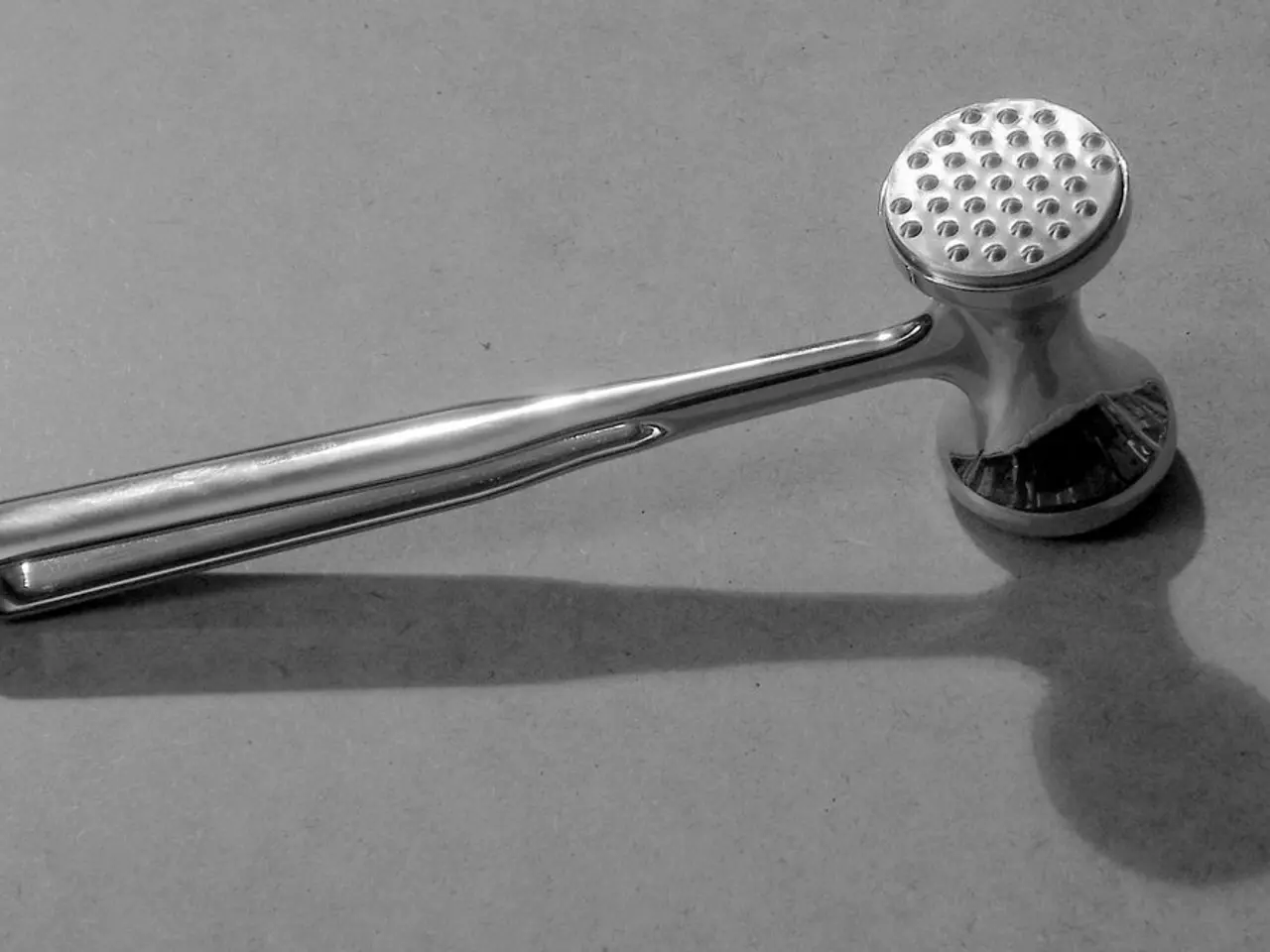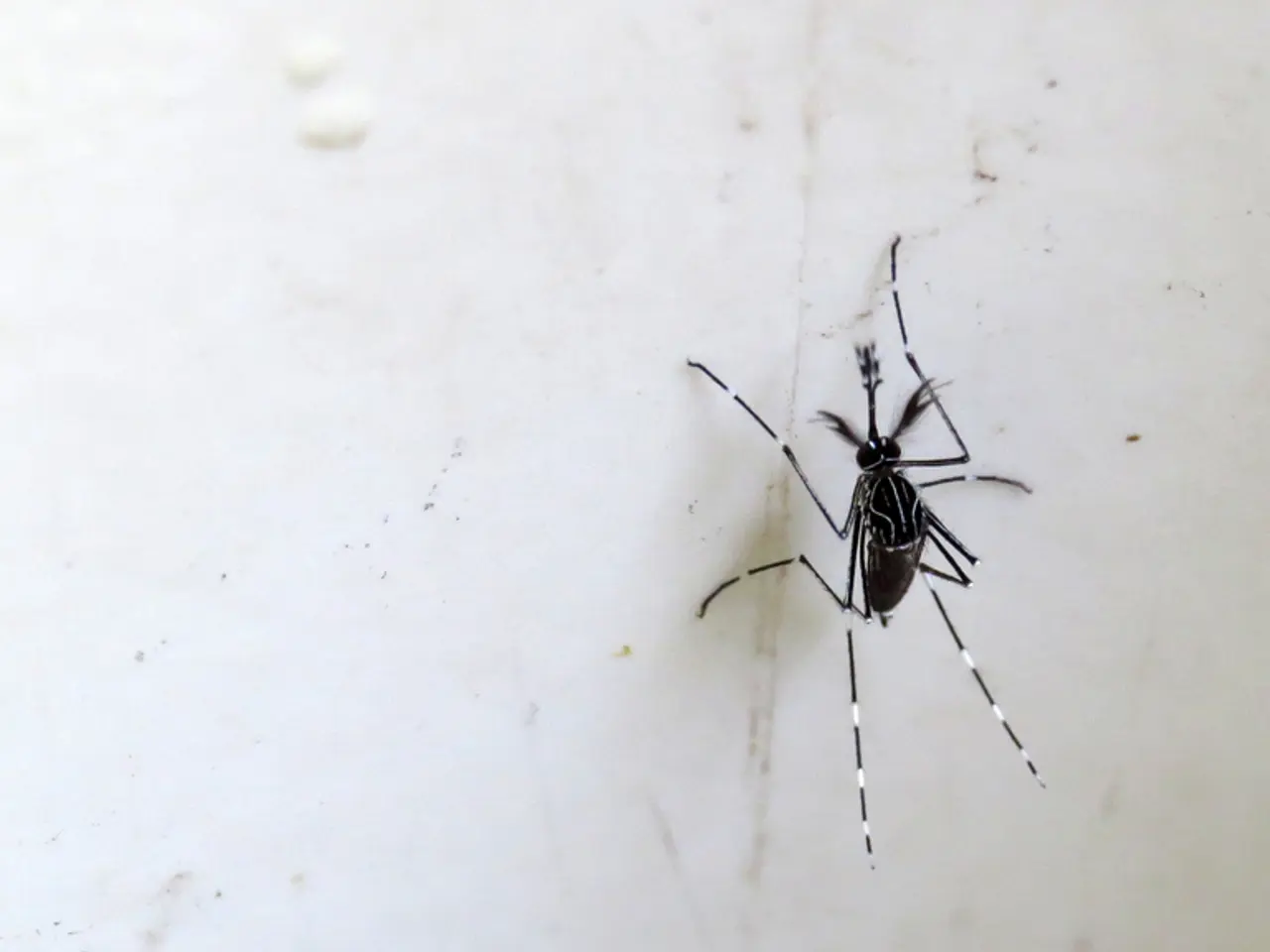Finger Mallet Disorder: Detailed Clinical Symptoms and Examination Procedures
Mallet finger, a common yet often misunderstood fingertip injury, occurs when the extensor tendon at the tip of the finger is damaged. This damage results in the fingertip drooping and being unable to straighten actively.
Unlike other common fingertip injuries, mallet finger specifically involves injury to the extensor tendon that straightens the distal interphalangeal (DIP) joint. This distinctive characteristic causes the fingertip to droop, making it difficult to perform everyday tasks such as holding objects, typing, writing, buttoning a shirt, or grasping items.
Mallet finger can occur during everyday activities, not just sports, and risk factors include playing sports without protective gloves, age-related wear and tear of tendons, and activities involving forceful bending of the fingertips. In some cases, a nail injury may also be present, causing a swollen, blue area under the nail bed.
If a fingertip injury occurs and the finger remains bent and cannot be straightened, it may lead to a permanent deformity if left untreated. Immediate medical evaluation is crucial to rule out fractures or other serious damage after a fingertip injury.
A doctor will perform a physical examination and diagnostic imaging, typically an X-ray, to confirm mallet finger and rule out other potential issues like bone fractures. If there's suspicion of an avulsion fracture or other bony injury, radiographic imaging may be necessary to determine the extent of the injury and guide treatment decisions.
During the physical examination, the doctor will use his hand to check and press the injured area to rule out any suspected fracture. He will also ask the patient to lift their finger and try to extend it to perform an active extension test. If the patient is unable to lift their finger, it suggests damage to the tendon, which could indicate a mallet finger.
The doctor will then perform a passive extension test, where the finger is lifted upwards and left there. If it stays upright, it can rule out a mallet finger, but if the finger bends down, there is confirmed damage to the tendon.
Treatment for mallet finger typically involves splinting, but surgery may be required in some cases. Proper examination by a doctor is advised to get early treatment for a mallet finger to prevent a permanent deformity.
It's important to note that mallet finger is a common fingertip injury in sports, particularly baseball, basketball, cricket, and volleyball. So, whether you're an athlete or not, always remember to protect your fingers during activities that involve forceful bending or potential impact.
Health and wellness practitioners often advocate for prompt medical attention when dealing with mallet finger, a medical-condition that specifically affects the extensor tendon at the fingertip, causing the DIP joint to droop. Pursuing therapies and treatments for mallet finger early on can help prevent permanent deformities and enable individuals to carry out everyday tasks comfortably, such as handling objects, typing, writing, buttoning a shirt, or grasping items.




